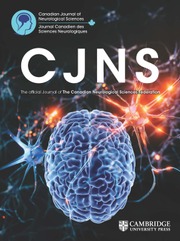No CrossRef data available.
Article contents
P.087 Methods for representing dipole distribution in high-density EEG source localization for focal epilepsy: a systematic analysis
Published online by Cambridge University Press: 10 July 2025
Abstract
Background: Routine electroencephalography (EEG) provides excellent temporal resolution for evaluation of focal epilepsy, but lacks spatial resolution. High-density-EEG (HDEEG)-based source-localization significantly enhances spatial resolution, but requires greater standardization. We systematically review HDEEG systems, methods, and metrics utilized for evaluating focal epilepsy. Methods: A systematic search was conducted in PubMed using PRISMA guidelines with keywords “HDEEG” or “high-density EEG”, “source localization and “focal epilepsy”. Inclusion criteria: studies from the last 20 years, human subjects with focal epilepsy, sample size ≥ 10 and HDEEG with source localization methods clearly described. Results: 37 of 65 studies fulfilled inclusion criteria, with most reporting N<50. Most studies (14) used a 256-electrode HDEEG setup; 10 used 128-electrode configurations, and 6 used 76–83 electrodes. EEG source localization most commonly used Cartool (N=12) and Curry (N=5) softwares. Standard MRIs were used in 25 studies, and customized MRIs in 12. Metrics like clustering coefficient were reported to represent dipole distribution (10 studies); while functional connectivity analysis was reported in 7 studies. Conclusions: Variations in software choice, metrics for dipole distribution assessment, and MRI integration are evident from the current literature. Clustering methods and functional connectivity metrics are most commonly employed to represent dipole distribution, reflecting their increasing utility in understanding brain networks.
Information
- Type
- Abstracts
- Information
- Copyright
- © The Author(s), 2025. Published by Cambridge University Press on behalf of Canadian Neurological Sciences Federation

